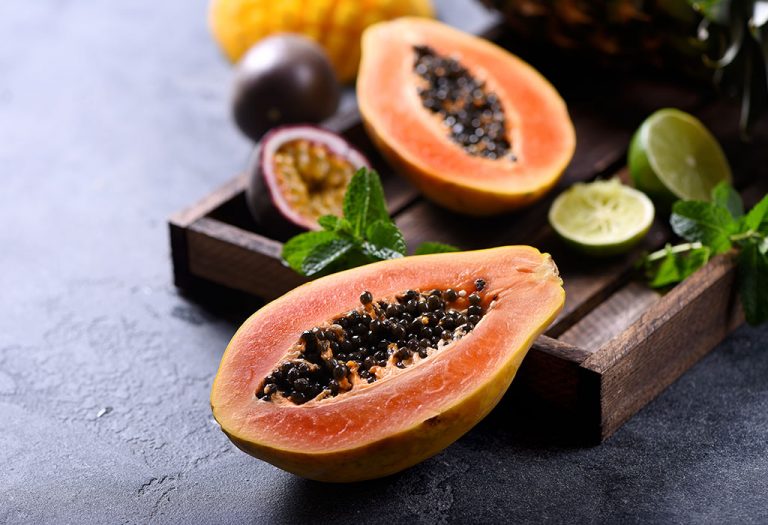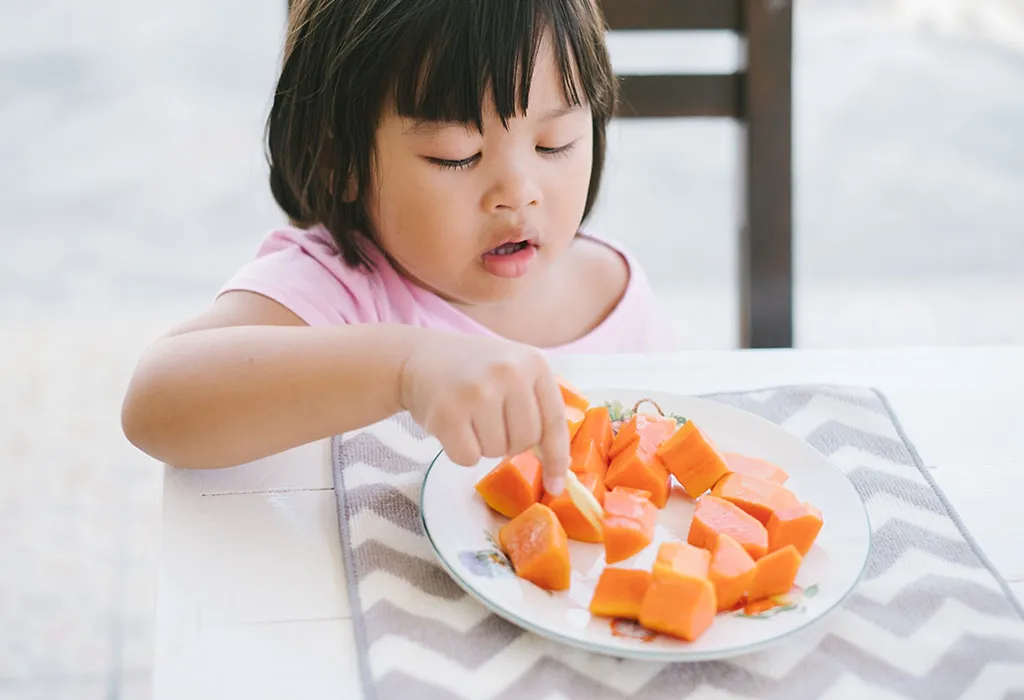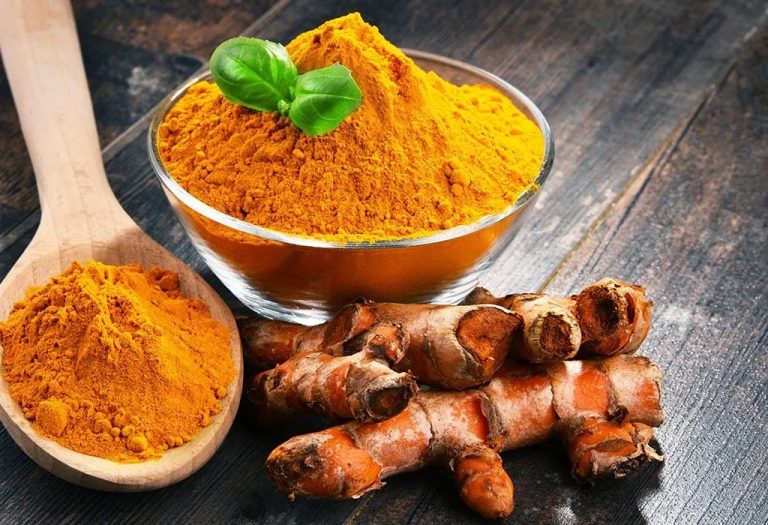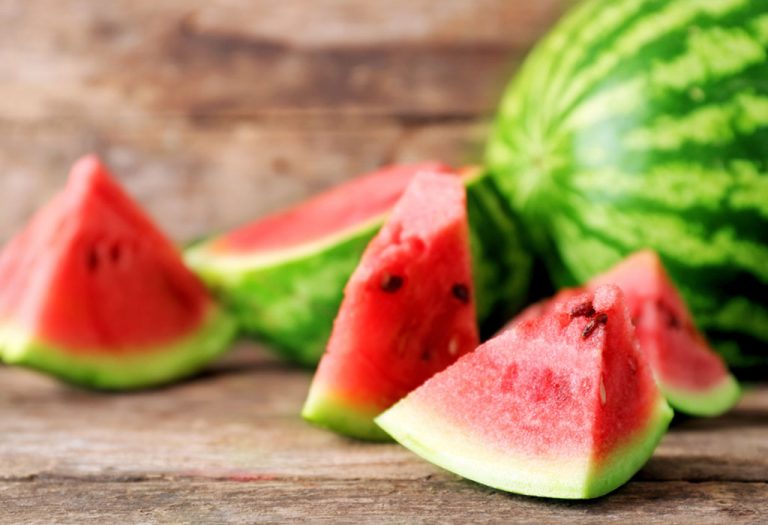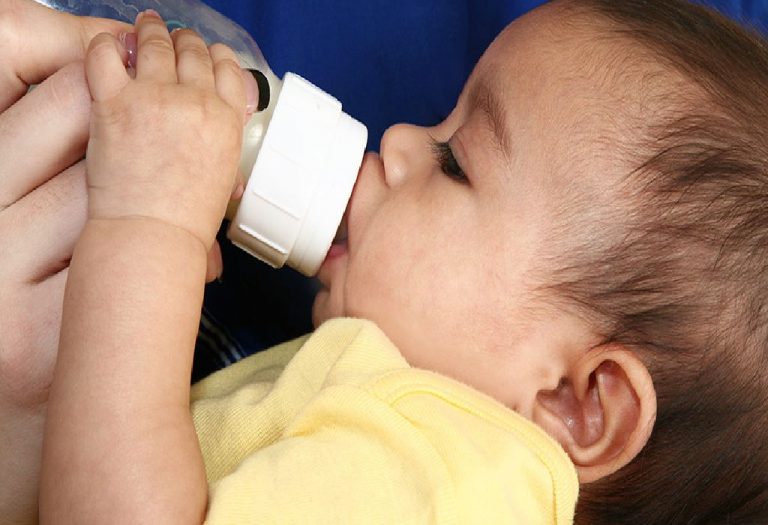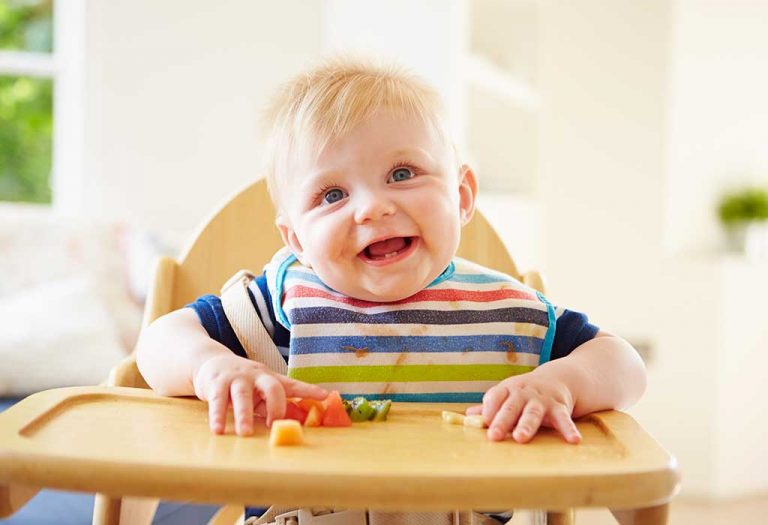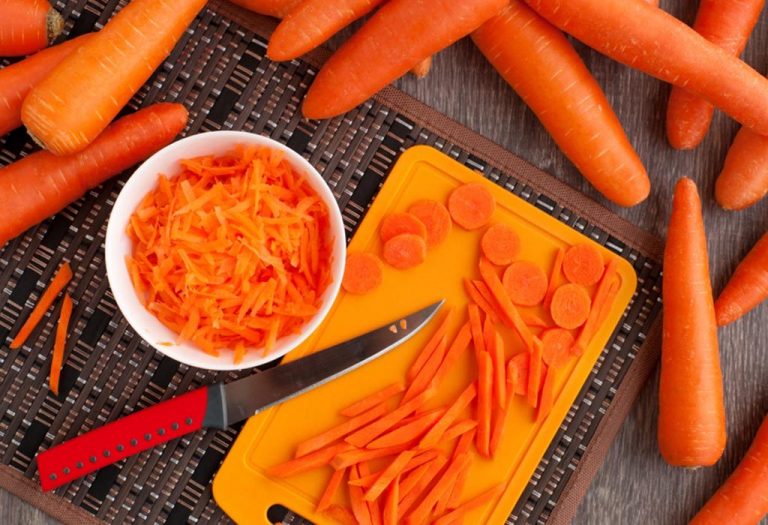Papaya for Babies: Amazing Benefits and Food Recipes

The health benefits of papaya for infants are undisputed. It is a powerhouse of essential vitamins and minerals such as vitamin C, vitamin A, folate, potassium, and magnesium. Incorporating papaya into your baby’s diet can aid in their overall growth and development. To introduce papaya to your little one, you can start by mashing it into a puree or blending it with other fruits for added flavor and nutrition. As your baby grows, you can gradually introduce small, soft papaya chunks for them to explore different textures and tastes. Always ensure that the papaya is ripe and thoroughly washed before serving it to your baby to minimize any potential choking hazards.
Is It Safe to Give Papaya to Babies?
Certainly! Papaya can be introduced to babies around 6-8 months of age, provided they have started on solid foods (1). Opt for ripe papayas, which are soft and vibrant in color. Remember to remove the seeds and peel the fruit before serving. Begin with small amounts of mashed or papaya puree for baby to minimize choking risks, gradually transitioning to soft chunks as your baby becomes more accustomed to textures. Monitor for any signs of allergies, such as rash or vomiting, and incorporate papaya as part of a diverse diet to ensure balanced nutrition for your little one.
When Can You Feed Papaya to Your Baby?
Papaya is a great fruit to add to your baby’s diet only after you have first started him on other food like bananas, avocados, sweet potatoes, and squash. They are all easily digested, and once your baby has tolerated them well, you can gradually introduce papaya (2). The best time to include papaya to your baby’s diet is around 7 to 8 months of age.
Adding papaya to your little one’s diet can help you enhance its nutritional value. Papaya for 6-month baby is a great option when starting solids! A breakdown of the nutritional value of the fruit is provided below. Further on, we shall also take a look at the health benefits papaya has for your baby.
Nutritional Value of Papaya
Is papaya good for babies? The answer is yes! A single medium-sized papaya can be a powerhouse of nutrients as it consists of Vitamins A, B and C, folate, magnesium, copper, iron, calcium, potassium, lycopene and phosphorus.
Take a look at the table to see the nutrients one cup of mashed ripe papaya has:
Source: http://wholesomebabyfood.momtastic.com/papayababyfoodrecipes.htm
Health Benefits of Papaya for Your Baby
Besides packing in a punch of nutrients and vitamins, there are plenty of benefits your baby can gain from eating papaya. However, the fruit is recommended only for babies who have been weaned onto solids (7 or 8 months of age).
Here’s how papaya can benefit your baby’s health:
| Vitamins | Minerals |
| Vitamin A – 2185 IU | Potassium – 419 mg |
| Vitamin B1 (thiamine) – 0.06 mg | Phosphorus – 23 mg |
| Vitamin B2 (riboflavin) – 0.07 mg | Magnesium – 48 mg |
| Vitamin B3 (niacin) – 0.82 mg | Calcium – 46 mg |
| Vitamin B5 (Pantothenic acid) – 0.439 mg | Sodium – 18 mg |
| Vitamin B6 (pyridoxine) – 0.087 mg | Iron – 0.575 mg |
| Vitamin C – 140.1 mg | Zinc – 0.184 mg |
| Vitamin K – 6 mcg | Manganese – 0.092 mg |
| Folate – 1 mcg | Copper – 0.103 mg |
1. Boosts Digestion
The enzyme papain present in this fleshy fruit is useful in breaking down complex food structures (3). Regular consumption of papaya can improve your child’s digestion capabilities significantly.
2. Enhances Immunity
A baby’s immune system is not as developed as that of an adult, which makes them susceptible to infections and ailments. Vitamin C in papaya boosts your child’s immunity and helps prevent sickness (4).
3. Useful in Healing Skin Sores
The abundance of Vitamin A in papaya keeps skin protected from burns, ulcers, and sores (5). The pulp of this fruit can also be applied topically on minor burns and rashes. This will help reduce the burning sensation.
4. Improves Metabolism
The fruit is a rich source of folates, which are necessary for the production of amino acids (6). This can, to some extent, lower the risk of cardiovascular diseases in adulthood, and belly aches in babies.
5. Ensures Regular Bowel Movement
The fibre content of papaya acts as a natural laxative and can ensure consistent bowel movements in your baby. The use of papaya for constipation in babies is a time-tested remedy.
6. Gets Rid of Intestinal Worms
Two spoons of a mixture of dried and powdered papaya seeds combined with honey can help do away with intestinal worms. The seeds have an enzyme called cysteine proteinases, which can help get rid of intestinal worms (7).
7. Good for the Eyes
Vitamin A in papaya helps promote good vision and prevent problems such as night blindness.
8. Promotes Red Blood Cells
The presence of iron helps maintain good haemoglobin levels and a stable red blood cell count.
With all these benefits, papaya is sure to top the charts in the list of highly nutritional fruits for babies. However, parents need to take some precautions when feeding this fruit to their little ones. Read on for more information.
Possible Side Effects of Papaya on Babies
Introducing new foods to babies can be an exciting but cautious endeavor. While papaya is generally safe for babies when introduced at the appropriate age and in moderation, there are potential side effects to be aware of. Here are two key points to consider:
1. Allergic Reactions
Some babies may develop allergic reactions to papaya, which can manifest as skin rashes, itching, swelling of the face or tongue, vomiting, or diarrhea. It’s essential to monitor your baby closely after introducing papaya and seek medical attention if any adverse reactions occur.
2. Gastrointestinal Distress
Papaya contains enzymes like papain, which can aid digestion in some individuals but may cause gastrointestinal discomfort in others, especially if consumed in large amounts. Watch for signs of stomach upset, gas, or loose stools after feeding papaya to your baby, and adjust the serving size accordingly to avoid discomfort. Unripe papayas can cause stomach aches and cramps. So, see that the fruit is ripe enough to consume.
Precautions to Take When Feeding Papaya to Babies
As with any new food, you need to introduce papaya to your baby slowly and carefully. See how your baby likes the taste of the fruit and how their digestion is after consuming it (8). Start off with a small amount (one teaspoon) and slowly increase it over a few days.
Here are some more things you must keep in mind before you feed papaya to your baby:
- Limit the quantity to a couple of tablespoons since too much papaya can also cause a belly ache in babies.
- Make sure to stop if your baby doesn’t like papaya or shows signs of discomfort or reaction after consuming the fruit.
- Ensure your baby doesn’t have latex allergies as they may be cross-reactive to the fruit.
- Raw or uncooked papaya contains higher levels of papain, which may be too harsh for a baby’s delicate digestive system. Always cook or steam papaya before feeding it to your baby to make it easier to digest.
- If you’re unsure about introducing papaya to your baby or have concerns about allergies or digestive issues, consult with your pediatrician before adding it to their diet.
Once you are sure that it is safe for you to feed papaya to your little one, you must carefully pick the fruit to create some delicious papaya baby food recipes, some of which we have shared below. But first, here are some tips that can help you choose papaya for your baby.
Tips to Buy and Store the Papayas for Baby
The papaya you use for your baby food needs to be ripe and just right. Here are some tips for buying and storing them:
- Don’t buy papayas that are green and hard because they will take time to ripen and may even get bad before that. Only those that have yellow patches on them when plucked off the tree will eventually ripen.
- Papayas that are ready to eat will have an orange colour with a little bit of red in it. It will be firm but soft when pressure is applied and will have a mild, sweet fragrance.
- Too much fragrance means the fruit has over-ripened and will spoil soon. If you are planning to use the papaya after a few days, then go for the ones with yellow patches.
- Store ripe papayas in the refrigerator to prolong their freshness. Place them in a plastic bag or container to prevent them from absorbing other odors in the fridge.
- Alternatively, you can cut the papaya into chunks and store them in an airtight container in the refrigerator for quick and convenient access.
Now that you are all set to choose the right papaya fruit, let’s take a look at some delicious papaya baby food recipes to add some variety to your baby’s diet.
Easy Papaya Recipes for Your Baby
Even babies need some variety in their meals, and this is why you should use papaya in different ways while cooking for your baby. Here are some great papaya baby food recipes for you to try out:
For 4-6 Months
At this stage, your baby is just starting on solids. Simple papaya puree is ideal. Papaya is gentle on the stomach and packed with essential nutrients, making it a perfect choice for early introduction.
1. Papaya Mash
Ingredients:
- One Ripe Papaya
Method:
- Peel and de-seed the papaya before you cut it into big cubes.
- Simply mash or make a puree in a blender till you get a smooth consistency.
The papaya chunks can be first steamed if you want them softened up a bit for quicker digestion.
2. Papaya Carrot Mash
Ingredients:
- 1/2 cup cubed ripe papaya
- 1/2 cup carrots
Method:
- Steam the cubed papaya and diced carrot till they are soft.
- Mash the ingredients together.
- Your papaya carrot mash is ready.
3. Papaya Mango Puree
Ingredients:
- 1/2 cup cubed ripe papaya
- 1/2 cup ripe mango cubes
Method:
- Steam the cubed papaya.
- Mash the papaya and the mango.
For 6-8 Months
As your baby becomes more accustomed to solids, you can start introducing slightly textured foods. Mashed papaya with other fruits or vegetables can offer a delicious and nutritious meal option.
1. Fruity Breakfast Treat
Ingredients:
- 2 tbsp oatmeal prepared in advance
- 1 tbsp papaya; can be pureed or diced
- 1/2 small banana, sliced
Method:
- Boil the oatmeal in some breast milk till it softens.
- Blend all the ingredients until you get your desired consistency.
- You can steam the papaya if needed.
2. Papaya and Banana Mash
Ingredients:
- 1 ripe papaya, peeled, seeded, and diced
- 1 ripe banana, peeled and sliced
Method:
- Steam or boil the diced papaya until it is soft and easily mashable.
- Mash the steamed papaya and banana together until you achieve a smooth consistency.
- Let it cool slightly before serving to your baby. You can adjust the texture by adding breast milk, formula, or water if needed.
- Serve the papaya and banana mash to your baby in small, manageable portions, and enjoy watching them explore this delicious combination of flavors!
For 9-12 Months
By this stage, your baby may be ready for more complex flavors and textures. Papaya can be incorporated into various recipes, including smoothies, purees with grains, or as a topping for yogurt or oatmeal.
1. Cantaloupe and Papaya Smoothie/Milkshake for Babies
Ingredients:
- 2 tbsp natural yoghurt or 1/4th cup milk
- 1 tbsp diced watermelon or cantaloupe
- 1 tbsp diced papaya
Method:
- Cut the fruits into big pieces and put them in a blender.
- Add the yoghurt to make a smoothie or the milk to make a milkshake.
- The smoothie/milkshake can also be stored in the refrigerator for a few hours.
2. Papaya Yogurt Parfait
Ingredients:
- 1/2 cup ripe papaya, peeled, seeded, and diced
- 1/2 cup plain whole milk yogurt (or Greek yogurt for added protein)
- 2 tbsp unsweetened granola or crushed infant cereal (optional for added texture)
- 1 tsp honey or maple syrup (optional, omit if your baby is under 12 months or if you prefer not to use sweeteners)
Method:
- In a small bowl or serving glass, layer diced papaya at the bottom.
- Spoon yogurt on top of the papaya layer, spreading it evenly.
- If using, sprinkle a layer of unsweetened granola or crushed infant cereal on top of the yogurt.
- Repeat the layers until you reach the top of the bowl or glass, ending with a layer of papaya.
- Drizzle honey or maple syrup on top for added sweetness if desired.
- Serve the papaya yogurt parfait immediately as a nutritious snack or dessert for your baby.
FAQs
1. How to cut papaya for baby-led weaning?
For baby-led weaning, slice the papaya in half lengthwise, scoop out the seeds, and cut the fruit into manageable, finger-sized strips or cubes. Ensure the pieces are soft and ripe to reduce choking hazards.
2. Is it safe to give papaya leaf juice to my baby?
It’s not recommended to give papaya leaf juice to babies as it may be too strong for their delicate digestive systems. Stick to age-appropriate foods and consult with a pediatrician before introducing any new juices to your baby’s diet.
3. Can I give papaya to my baby during a fever?
Papaya is generally safe to give to babies during fever as it’s easily digestible and rich in vitamins and minerals. However, always consult with your pediatrician for specific dietary recommendations based on your baby’s condition.
4. Is there a risk of choking when giving papaya to a baby?
While papaya is soft and easily mashed, there is still a risk of choking, especially if the fruit isn’t properly prepared. Always ensure papaya is ripe, cut into appropriate sizes for your baby’s age and chewing abilities, and supervise your baby closely during feeding to minimize the risk of choking.
This was all about papaya for babies. Papaya is a delicious and nutritious food when ripe. It can be eaten as is or used along with a variety of other fruits to make delicious dishes. Avocados, apples, bananas, peaches, carrots, yoghurt, and chicken are just some of the foods that go well with papaya in baby food recipes.
Disclaimer : Each baby is different as far as development goes, and this information is just a guide and not a substitute for medical advice from a qualified professional.
References/Resources:
1. Papaya; National Library of Medicine; https://pubmed.ncbi.nlm.nih.gov/30000941/; November 2023
2. How to Make Homemade Baby Food; EatRight.org; https://www.eatright.org/health/pregnancy/babys-first-foods/how-to-make-homemade-baby-food
3. Sadek. K; Antioxidant and immunostimulant effect of carica papaya linn. Aqueous extract in acrylamide intoxicated rats (Acta Informatica Medica); National Library of Medicine; https://www.ncbi.nlm.nih.gov/pmc/articles/PMC3508853/; September 2012
4. Kaliyaperumal. K, Kim. H, Jegajeevanram. K, Xavier. J; Papaya: A Gifted Nutraceutical Plant – a Critical Review of Recent Human Health Research; Research Gate; https://www.researchgate.net/publication/260875046_Papaya_A_Gifted_Nutraceutical_Plant_-_a_Critical_Review_of_Recent_Human_Health_Research; March 2014
5. Hakim. R, Fakhrurrazi, Dinni; Effect of Carica papaya Extract toward Incised Wound Healing Process in Mice (Mus musculus) Clinically and Histologically; Evidence-Based Complementary and Alternative Medicine; Hindawi; https://www.hindawi.com/journals/ecam/2019/8306519/; November 2019
6. Folate; National Institutes of Health; https://ods.od.nih.gov/factsheets/Folate-HealthProfessional/
7. Moraes. D, Levenhagen. M, Costa-Cruz. J, da Costa. A, Netto, Rodrigues. R; In vitro efficacy of latex and purified papain from Carica papaya against Strongyloides venezuelensis eggs and larvae (Rev Inst Med Trop Sao Paulo); National Library of Medicine; https://www.ncbi.nlm.nih.gov/pmc/articles/PMC5441158/; April 2017
8. When, What, and How to Introduce Solid Foods; Centers for Disease Control and Prevention; https://www.cdc.gov/nutrition/infantandtoddlernutrition/foods-and-drinks/when-to-introduce-solid-foods.html
9. Papayas, raw; Food Data Central; U.S. Department of Agriculture; https://fdc.nal.usda.gov/fdc-app.html#/food-details/169926/nutrients
Also Read:
Mango for Infant
Oranges for Babies
Can Babies eat Chikoo
Benefits of Pear for Baby
Was This Article Helpful?
Parenting is a huge responsibility, for you as a caregiver, but also for us as a parenting content platform. We understand that and take our responsibility of creating credible content seriously. FirstCry Parenting articles are written and published only after extensive research using factually sound references to deliver quality content that is accurate, validated by experts, and completely reliable. To understand how we go about creating content that is credible, read our editorial policy here.






